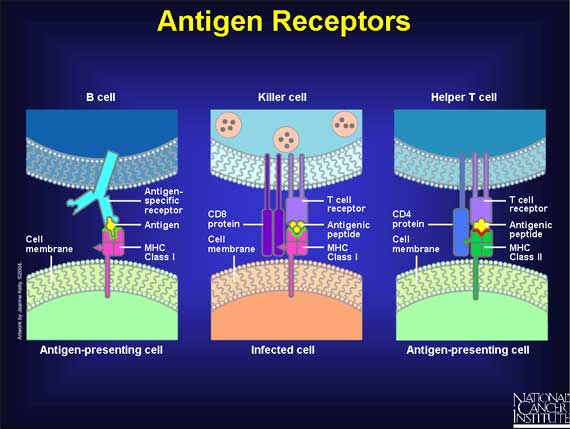|
Both B cells and T cells carry customized receptor molecules that allow them to recognize and respond to their specific targets.
The B cell's antigen-specific receptor that sits on its outer surface is also a sample of the antibody it is prepared to manufacture; this antibody-receptor recognizes antigen in its natural state.
The T cell's receptor systems are more complex. T cells can recognize an antigen only after the antigen is processed and presented in combination with a special type of major histocompatibility complex (MHC) marker. Killer T cells only recognize antigens in the grasp of Class I MHC markers, while helper T cells only recognize antigens in the grasp of Class II MHC markers. This complicated arrangement assures that T cells act only on precise targets and at close range.

< Previous | Index | Next Slide > |